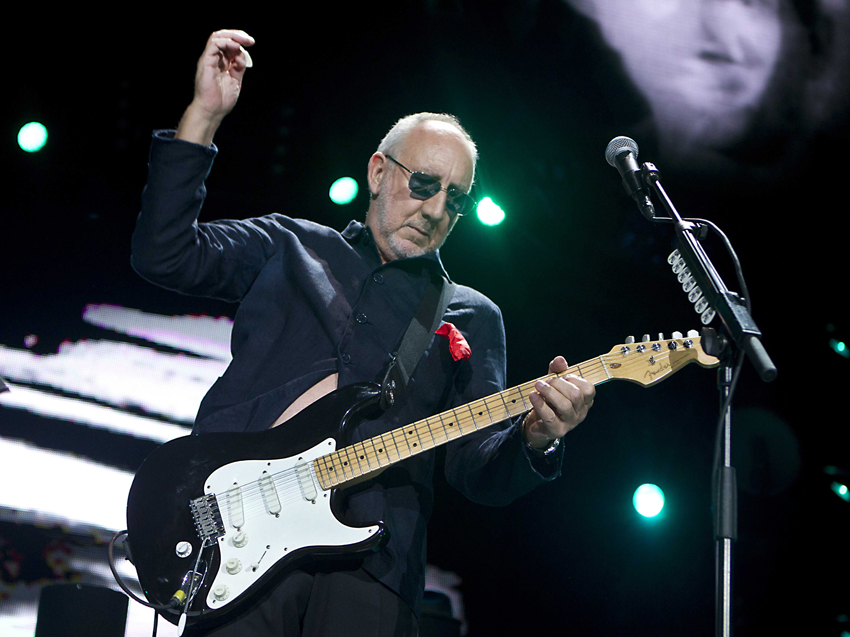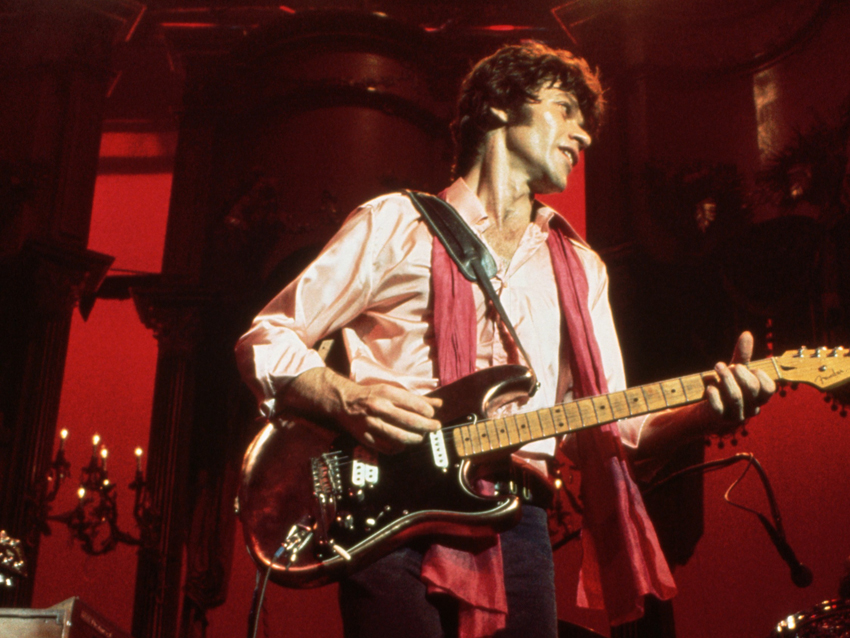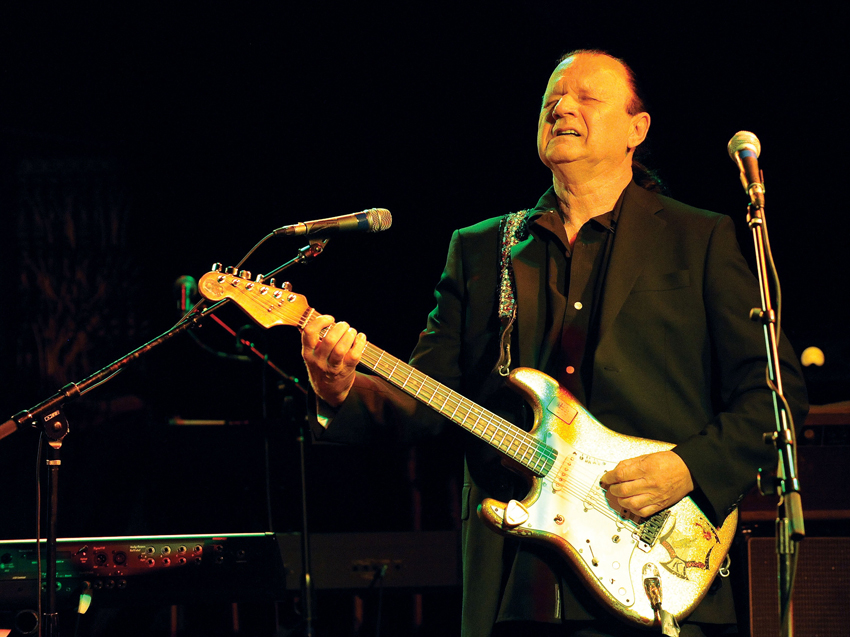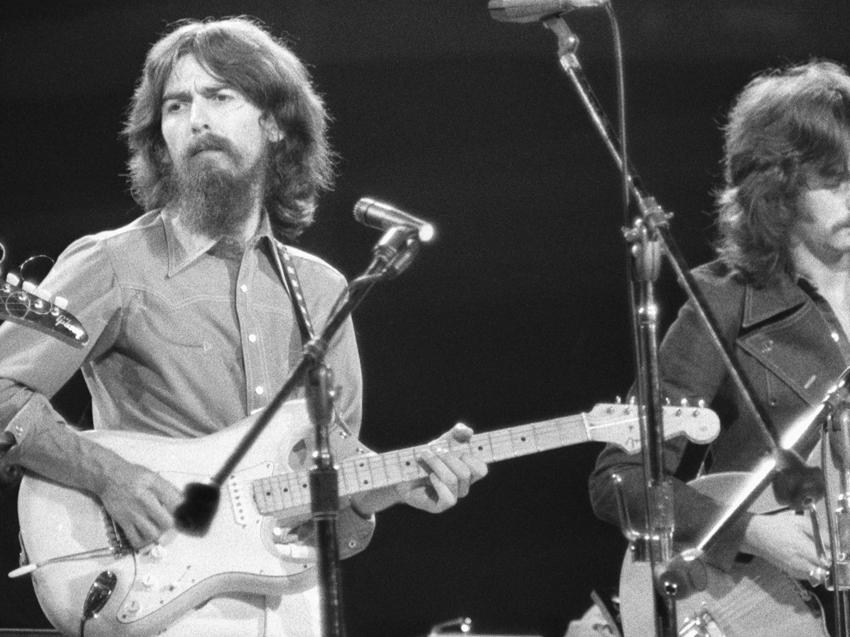The best Stratocaster players of the 1960s
From Jimi to George and beyond

Pete Townshend
Pete Townshend, The Who's explosive guitarist, has been associated with many guitars over his career, ranging from Rickenbackers to Gibsons, but he has always been fond of a Strat.
He could often be seen smashing the life out of one in the '60s, and in The Who's later years he has become a confirmed fan of the Strat, favouring it as his main live axe.

Robbie Robertson
The man who provided lead guitar for two seminal acts of the '60s - first as Bob Dylan's side man, then as a member of The Band - has always been a Fender man.
While he preferred a Telecaster for much of his early career, by the time The Band rose to prominence as one of the most critically acclaimed groups of the late '60s, he'd moved on the Stratocasters. You can see him ripping it up to devastating effect on The Band's legendary farewell show The Last Waltz below:

Dick Dale
In the early 60s, he’d been a pioneer of surf-guitar, and while souped-up Fender amps and reverb played a part, Dale insisted the Strat was the cornerstone of his brittle, tremolo-picked tone.
“The sound is a Stratocaster guitar,” he once noted. “It’s the solidity of the wood. The thicker the wood, the bigger and purer the sound. It was a Strat. Not the Jaguar, not the Jazzmaster.”
The surf scene wiped out, and Dale looked washed-up, but in 1994, he was at the heart of the most electrifying movie credits sequence of the age. “Any of you fucking pricks move and I’ll execute every motherfucking last one of you!” screeches Honey Bunny at the start of Quentin Tarantino’s Pulp Fiction – and so begins the warp-speed, staccato-note thrill-ride of Dale’s Misirlou.
The Strat had never sounded more sleazy, seedy or downright dangerous.

George Harrison
February 1965 saw Beatles roadie Mal Evans purchase Strats at George Harrison and John Lennon’s behest.
Although Harrison recalled this as during the Rubber Soul sessions, The Beatles were recording Help! at the time, as proven by photos of Lennon at Abbey Road with one of the Sonic Blue pair Evans bought.
Nowhere Man is probably the most overt example of a Strat on a Beatles recording: George and John are playing their Fenders in unison. Harrison’s Strat – neckplate dated December 1961 – would get a psychedelic makeover and become known as ‘Rocky’.
Post-Beatles, George chose a white Strat for the 1971 Concert For Bangladesh that some have speculated was assembled from the same haul of parts that yielded Eric Clapton’s Blackie.

Jimi Hendrix
James Marshall Hendrix is famous for many things – and he had a Strat slung around his shoulders for most of ’em.
Left-handed guitars were even harder to come by in Jimi’s 60s heyday than they are now, so he flipped his Strats over and restrung them back-to-front. This approach helped to shape his tone – the slanted bridge pickup gave more treble to his lower strings and a darker tonality to the high strings, while his tendency to jam his guitar’s three-way pickup selector in between pickups was partly responsible for Fender introducing the five-way pickup selector.
Singling out Hendrix’s Strat highlights is an unenviable task, but the graceful dexterity of Little Wing and outlandish aggression of Voodoo Child (Slight Return) are up there, for sheer control and tonal majesty alone.
Yet it’s impossible to ignore the iconic moments: the rendition of The Star-Spangled Banner at Woodstock, each time teeth met string, and that guitar-burning incident at Monterey. To quote Hendrix, “I decided to destroy my guitar at the end of a song as a sacrifice. You sacrifice things you love. I love my guitar.”
MusicRadar is the number 1 website for music makers of all kinds, be they guitarists, drummers, keyboard players, djs or producers...
- GEAR: We help musicians find the best gear with top-ranking gear round-ups and high- quality, authoritative reviews by a wide team of highly experienced experts.
- TIPS: We also provide tuition, from bite-sized tips to advanced work-outs and guidance from recognised musicians and stars.
- STARS: We talk to musicians and stars about their creative processes, and the nuts and bolts of their gear and technique. We give fans an insight into the actual craft of music making that no other music website can.
